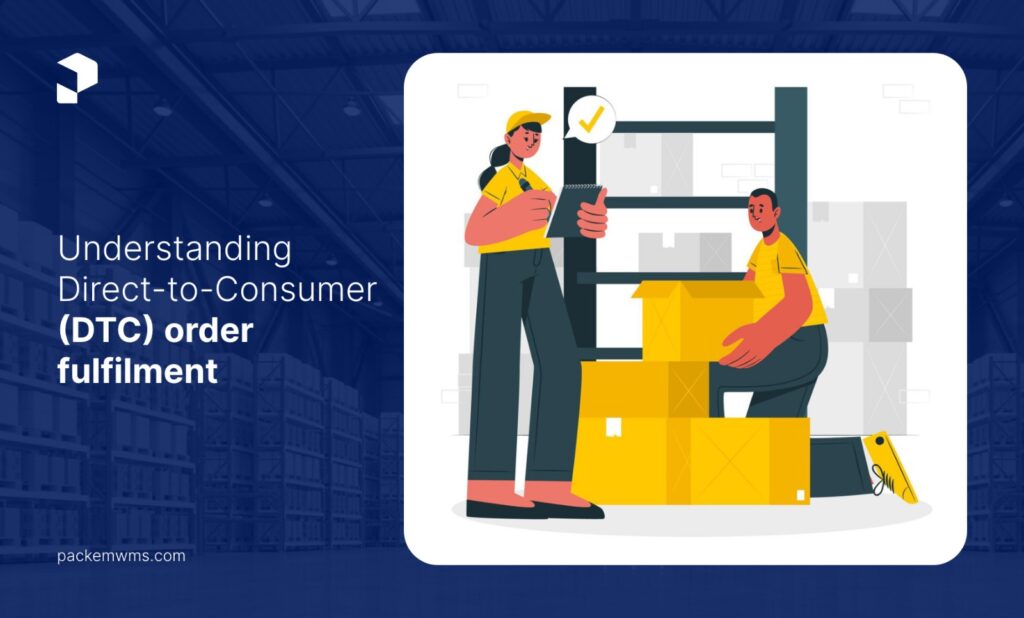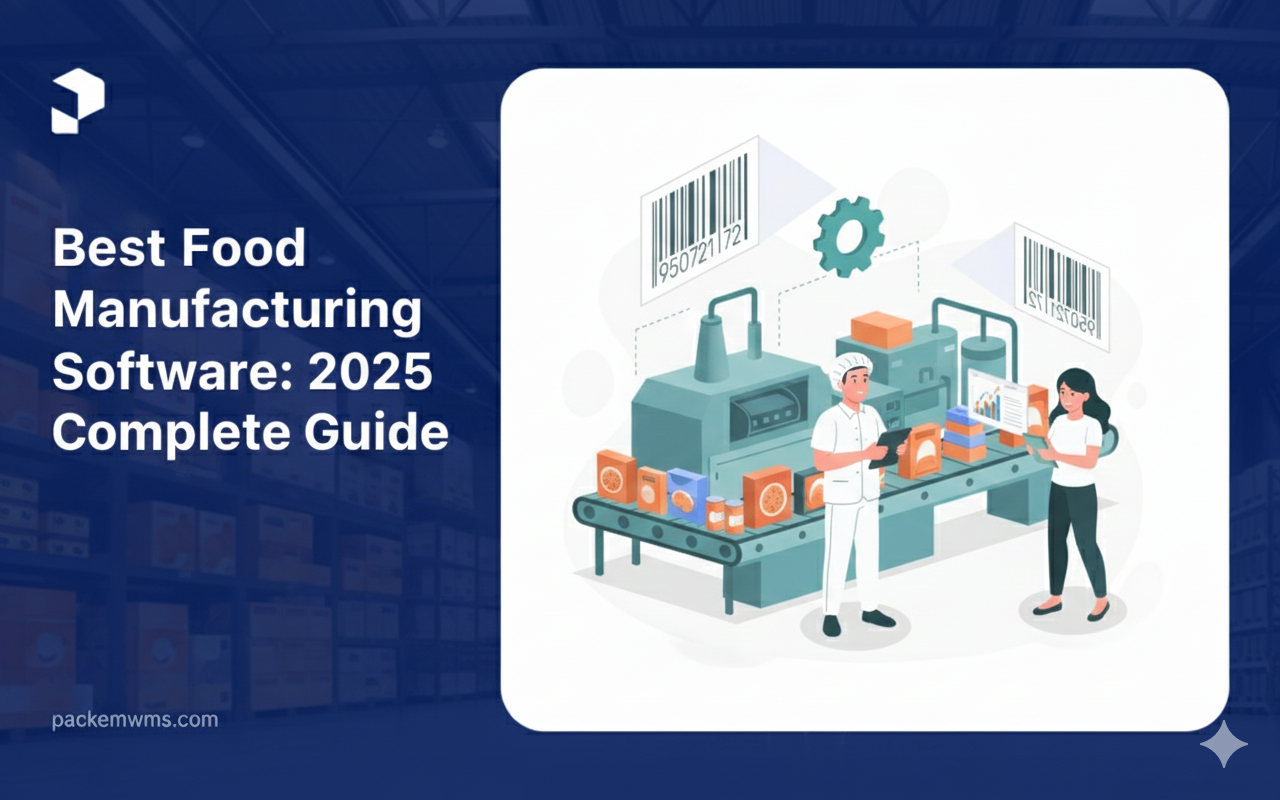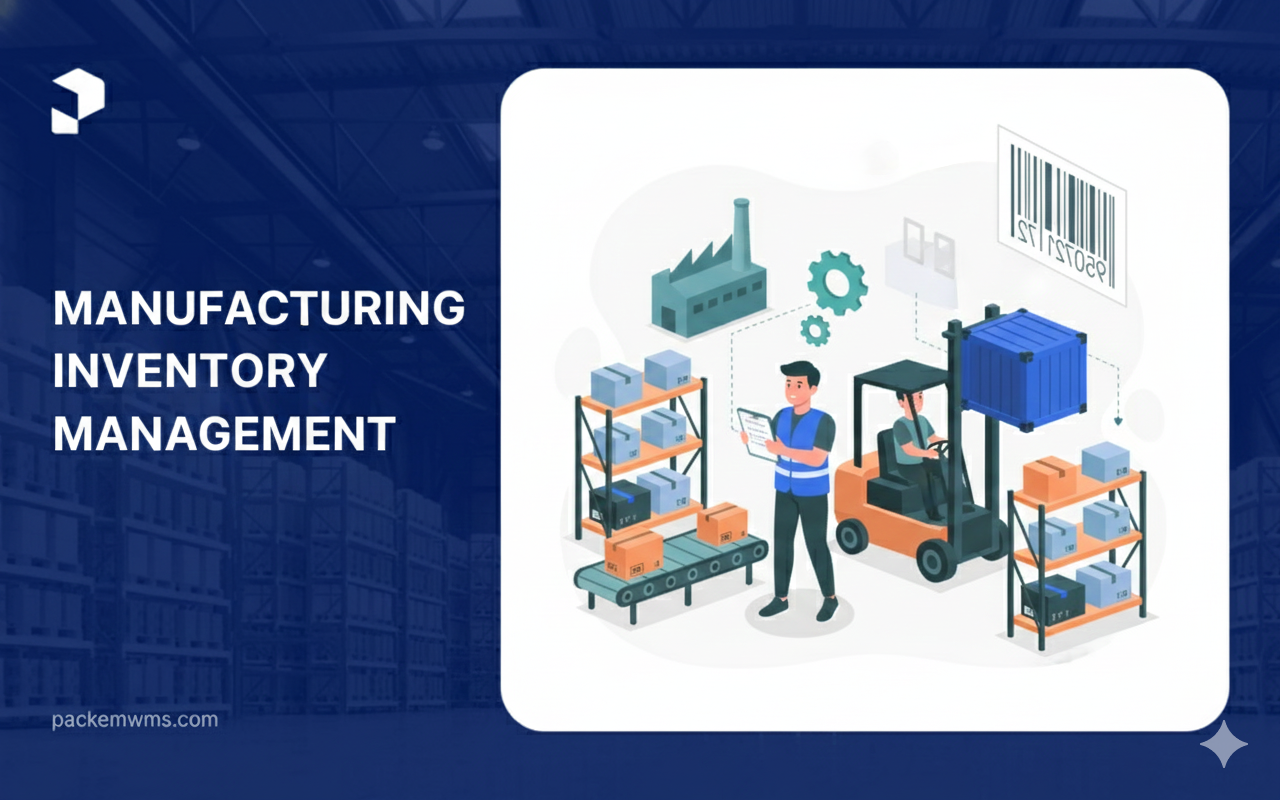To stay competitive in today’s fast-paced digital landscape, companies must optimize their supply chains to be fast, efficient, and scalable. This becomes especially critical as consumer trends shift rapidly and demand patterns become increasingly unpredictable.
This paper explores how brands can maximize the efficiency of DTC order fulfillment by understanding the nuances of the model, recognizing growth opportunities and operational challenges, and implementing strategic technology and outsourcing solutions.
We delve into the role of Warehouse Management Systems (WMS) and Inventory Management Software, the benefits of partnering with third-party logistics (3PL) providers, and the importance of customer service in boosting engagement and retention.
Ultimately, these areas of focus will help brands meet consumer expectations and achieve best-in-class performance in the highly competitive DTC e-commerce space.
Understanding Direct-To-Consumer (DTC) Fulfillment
What Is DTC Fulfillment?
Unlike traditional retail models that rely on intermediaries, DTC fulfillment involves brands selling directly to consumers. This model gives businesses complete control over the customer experience—from product presentation and order fulfillment to delivery and after-sales support.
Key Differences Between DTC and Traditional Fulfillment
1. Order Volume and Packaging
Traditional B2B models handle large, uniform shipments to a single client. In contrast, DTC models manage many small, individualized orders. Each order requires unique picking, packaging, and labeling, making the process more labor-intensive and complex.
2. Technology Requirements
Traditional WMS systems are often sufficient for B2B operations, focusing on internal processes. DTC fulfillment, however, demands a more sophisticated fulfillment execution system. This must integrate with:
-
E-commerce marketplaces
-
Shipping carriers
-
Customer service platforms
This integration ensures seamless order downloading, shipment tracking, and real-time customer support.
3. Customer Engagement
DTC brands interact directly with customers, enabling real-time feedback, data collection, and brand loyalty development. In traditional models, this relationship is usually owned by third-party retailers, limiting brand visibility and insight.
Operational Considerations in DTC Fulfillment
Shipping and Handling
Effective DTC fulfillment requires optimized shipping logistics. Companies must integrate with multiple carriers to:
-
Offer faster delivery
-
Access competitive shipping rates
-
Adapt quickly to changing delivery demands
Customer Service
Since DTC brands interact directly with end consumers, a reliable customer service framework is essential. It must efficiently manage:
-
Order inquiries
-
Returns and exchanges
-
Feedback and complaints
Exceptional service can significantly enhance customer satisfaction and loyalty.
Growth and Challenges of DTC Fulfillment
Rapid Growth of the DTC Model
The DTC model saw a surge in popularity during the global pandemic, driven by shifting consumer behavior toward online and direct brand purchases. Today, customers expect a seamless, transparent, and fast shopping experience, making DTC more relevant than ever.
Challenges in Scaling DTC Operations
Despite the growth, brands face several challenges, including:
-
Scaling technology infrastructure
-
Managing rising operational costs
-
Maintaining service quality during peak demand
To overcome these hurdles, businesses must invest in automation, smarter logistics, and customer-centric systems.

Benefits of DTC Fulfillment
1. Increased Customer Engagement
DTC fulfillment fosters deeper customer relationships. Brands can interact directly, gather insightful feedback, and customize the customer journey.
By controlling the entire customer experience—from placing the order to delivery—brands can ensure:
-
Faster and more reliable shipping
-
Transparent real-time tracking
-
Personalized packaging
These elements enhance customer trust, loyalty, and advocacy, ultimately driving repeat business.
2. Higher Profit Margins
By eliminating intermediaries, DTC businesses can:
-
Control pricing directly
-
Achieve higher margins
-
Reduce traditional retail markups
This increased profitability gives online store owners more room to reinvest in growth, product innovation, or improved customer service. Managing returns in-house can also reduce costs further and strengthen the brand’s financial health.
3. Enhanced Control Over Brand and Experience
DTC models offer complete control over branding and customer experience. From packaging design to unboxing and after-sales service, every touchpoint can be tailored.
Direct feedback enables brands to quickly:
-
Implement product improvements
-
Adjust marketing strategies
-
Enhance customer experiences
This leads to stronger brand positioning and higher satisfaction rates.
Leveraging Third-Party Logistics (3PL) for DTC Fulfillment
Outsourcing to a 3PL provider offers several advantages that directly support DTC growth:
PackEM Can Help You:
-
Transparent Cost Breakdown: Optimize your pricing strategy based on clear cost insights.
-
Returns Management: Streamline and reduce the cost of returns.
Key Benefits of 3PL Partnerships
✅ Cost Efficiency
Outsourcing warehousing, equipment, and staffing can lower operational expenses. 3PLs benefit from economies of scale, offering lower costs per order.
✅ Improved Scalability
3PLs allow brands to scale operations up or down based on order volume, especially during peak seasons or market fluctuations—without long-term investments in infrastructure.
✅ Industry Expertise
3PL providers specialize in logistics and bring years of experience, resulting in:
-
Fewer errors
-
Greater order accuracy
-
Enhanced customer satisfaction
✅ Faster Delivery Speeds
With multiple warehouse locations, 3PLs reduce shipping times, improving customer experience and encouraging repeat purchases.
✅ Advanced Technology Access
3PL partners offer cutting-edge tools like:
-
Real-time order tracking
-
Automated inventory systems
-
Data analytics for demand forecasting
✅ Technology Integration
Choose a 3PL whose platforms seamlessly integrate with your existing systems—such as ERP, e-commerce, and order management—to ensure smooth operations.
✅ Comprehensive Services
A reliable 3PL should manage:
-
Inventory
-
Fulfillment
-
Shipping
-
Returns
This consolidation simplifies logistics and frees up internal resources.
✅ Geographic Reach
A strong fulfillment network ensures faster deliveries to key markets—essential for customer satisfaction and retention.
✅ Strong Customer Support
Customer service should be a priority. Your 3PL partner must offer clear communication and dependable support, especially during time-sensitive situations.
Experience the simplest inventory management software.
Are you ready to transform how your business does inventory?
Conclusion
Successfully managing DTC fulfillment requires more than just logistics—it demands a holistic strategy involving technology, operations, and customer experience.
From understanding the complexities of DTC fulfillment to implementing modern WMS systems and outsourcing to experienced 3PL providers, brands must focus on operational excellence to remain competitive.
As the DTC model continues to evolve, integrating scalable tech solutions and forming strong partnerships will be essential. These steps will enable businesses to:
-
Scale efficiently
-
Meet rising consumer expectations
-
Drive growth in a highly dynamic e-commerce environment
In an increasingly volatile market, these strategies offer a blueprint for success in DTC fulfillment—anchored in efficiency, innovation, and customer focus.
FAQ's
Important criteria include reliability, scalability, technology capabilities, geographic coverage, experience in your industry, pricing structure, customer service quality, and compatibility with your business values and objectives.
- Design and implement custom packaging solutions that reflect your brand identity.
- Offer flexible fulfillment options to cater to diverse customer needs and preferences.
- Integrate customer feedback mechanisms to gather valuable insights and continuously improve your offerings.



